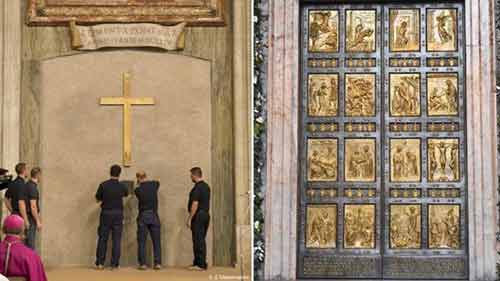
Tens of thousands were at a Mass in St Peter’s Square for the start of the Pope Francis’ “revolution of tenderness”. This is A Holy Year of Mercy, from 8 December 2015 to the Feast of Christ the King on 20 November 2016. Normally a Holy Year is every 25 years (the last was in 2000).
It is all part of Pope Francis trying to make the Roman Catholic Church more inclusive, less condemnatory of the tangles of difficulties that ordinary people of goodwill make in their lives, more forgiving and understanding.
Mercy and compassion lie front and centre of Pope Francis’ reframing, stressing forgiveness over judgement. As far as I am aware, the final document from the recent Vatican Synod on the family is not yet available in English (please correct me with a link if I am wrong), but excerpts (and here) indicate attempts to hold to doctrine whilst adjusting practice (on such as divorce and remarriage, gays and lesbians, co-habitation, women).
The visible actions, and the language used should encourage and not distract from the core of the Year of Mercy which is the Pope’s jump-starting our commitment to leading lives of merciful, loving service. God, says Pope Francis, makes love “visible and tangible.” This “indicates something concrete: intentions, attitudes, and behaviours that are shown in daily living. The mercy of God is his loving concern for each one of us.” What actions, practices, and disciplines of mercy might each of us develop into life habits during this year?

The practice of the Holy Year draws on First Testament concepts of jubilee (Leviticus 25:8-13). This was taken up by Pope Boniface VIII in 1300. Normally, it involves pilgrimage to the Holy Door in Rome. The abuse of pilgrimages, indulgences, and the gaining of financial benefit at the expense of ordinary people was part of the causes of the Reformation, and ever-fragmenting Protestantism. Pope Francis has instructed churches and cathedrals to take part in the tradition of the Holy Door, to help people mark the jubilee at home rather than coming to Rome. On the other hand, there has been increasing appreciation of colour, action, signs, and symbols, and our enfleshed nature as humans, so that Protestants are rediscovering and renewing previously-abandoned practices.
I have set the following video start time so that you are watching from the opening of the Holy Door
There is a Roman saying “after a fat pope, a thin pope” – that the cardinals choose someone with a distinctly different approach to the predecessor. Certainly, we have had a fat papacy for the time most people can remember. Many of those who have been following the fat-papacy approach are now clearly unhappy. The decades of rhetoric of “This is what the Pope says; this is what the Pope does” now no longer fulfils their agenda, and they are rapidly finding a shift of paradigm. Here is just one Roman Catholic group calling for the resignation of Pope Francis.
If you appreciated this post, consider liking the liturgy facebook page, using the RSS feed, and/or signing up for a not-very-often email, …


